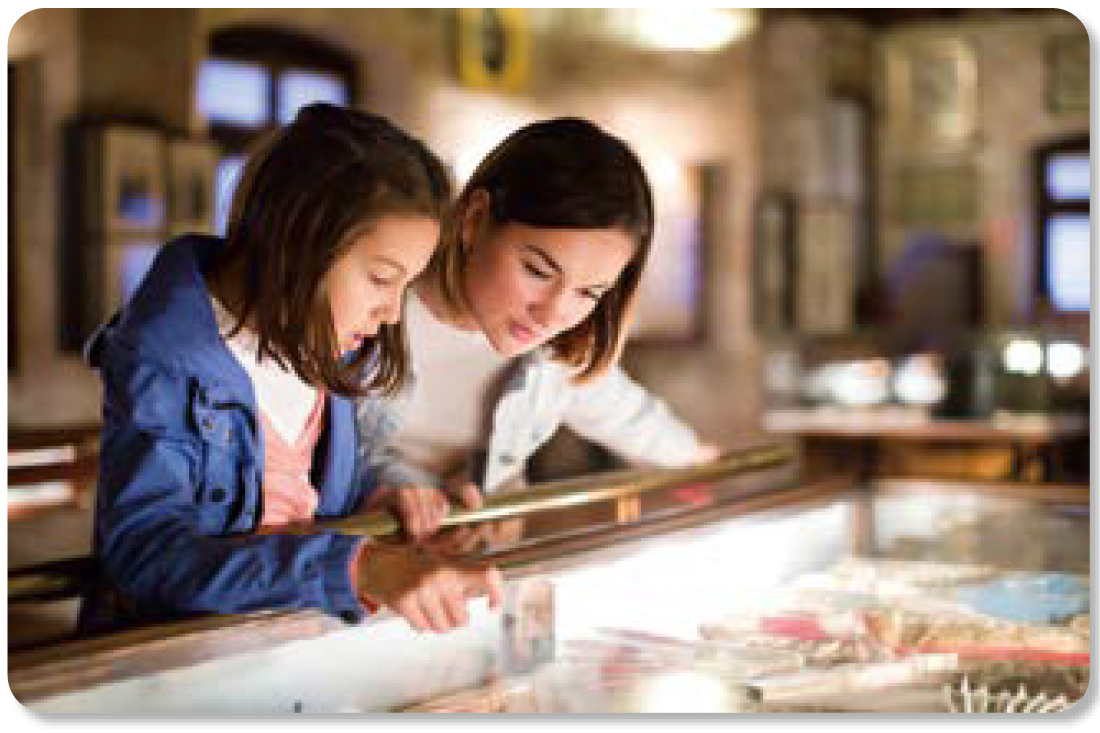Disclaimer: machine translated by DeepL which may contain errors.
| How to Share Your Science How to Share Your Science |
Fifth Edition
Rohan Mehra Project Senior Specialist Division for Strategic Public Relations, The University of Tokyo |
 |
Sharing Science -
Discoveries on Display
In this science communication (scicom) series, members of the Division for Strategic Public Relations suggest ways UTokyo researchers can share their Today we're going to explore how museums and installations can bring your research to new audiences in fun and exciting ways. Today we're going to explore how museums and installations can bring your research to new audiences in fun and exciting ways.
What's in a museum?
Young and old alike, everybody loves a good museum. They're a great way to spend a day when you're on holiday at home or abroad. And there are many kinds, each catering to different interests: Science, social or ancient or natural history, fashion - there's something for everyone. Museums are often some of the most popular tourist destinations, meaning they provide a great audience for the items exhibited within. But what's this got to do with you?
People have carefully chosen specific items they think convey a piece of a story, told by an exhibition. These people are called curators, and a long time ago, I was lucky enough to be a curator of contemporary science at the London Science Museum. There I learned, amongst other things, the benefits to researchers of having objects related to their research on display.
Why put my research on display?
A popular museum can receive millions of visitors each year; that means approximately twice that many millions of eyes could gaze upon something you have lovingly created. And items on display always have accompanying text (in museum vernacular we call that interpretation) - this would reference your research and your department. I'm sure you all have fond memories of visiting museums throughout your lives. I'm sure you all have fond memories of visiting museums throughout your lives.
However, not all research necessarily involves physical objects, which could include both items studied as well as items created for the purpose of study. And there are many properties of objects that might make them desirable for inclusion in a museum exhibition, including size, aesthetics, and whether there is an interesting story behind the object. Sometimes objects relating to sciences such as physics can be difficult as they might be too small to see, or they might just be too small to see, or they might just be too small to see. But if something is interesting to you, it is probably also interesting to someone else.
How do you get your research into a museum?
As with many things in life, do your homework and persevere. You could start by thinking about what museums might be interested in your research. You could start by thinking about what museums might be interested in your research. explore online or in person the kinds of displays they have: Do they display big things, small things, new things, old things, and so on. If you investigate a little before contacting any curatorial staff, then it should be easier to pitch an idea to them - at the very least they will take you seriously.
Most often a museum will not list its curators or their contact details online, but the general information staff should be able to put you in touch with someone if you ask to speak with a curator. Most often a museum will not list its curators or their contact details online, but the general information staff should be able to put you in touch with someone if you ask to speak with a curator of a certain subject area; for example, meteorites, Edo era, Italian formal dress - you get the idea. When you get to speak to a curator, you could tell them about the area of the museum you think your research object might be suitable for. But curators are always looking out for more things, and it's a good way to start the conversation. But curators are always looking out for more things, and it's a good way to start the conversation.
Patience is important, as museums usually plan exhibitions years in advance. But if you have something you want to show to the world, and if you think other people will find it interesting, then there's a good way to start the conversation. interesting, then there's a good chance that a museum somewhere in Japan or abroad would be keen to display that something too.

Iakov Filimonov/Shutterstock.com
When researchers do get to have something put on display in an exhibition, the feeling can be amazing.Curators take time to write interesting facts about the Often the item will tell part of a story and it can feel very significant when exhibited like that. Curators take time to write interesting facts about the objects from their prior conversations with the researcher.
Ultimately, having items on display in museums gets you great coverage for very little effort.
| He has created content for the BBC, National Geographic, London Science Museum, New Scientist and more. His aim in communicating science is to make it exciting so that everyone will want to learn more. |
Published in Faculty of Science News, January 2021
Communicating Science in English


